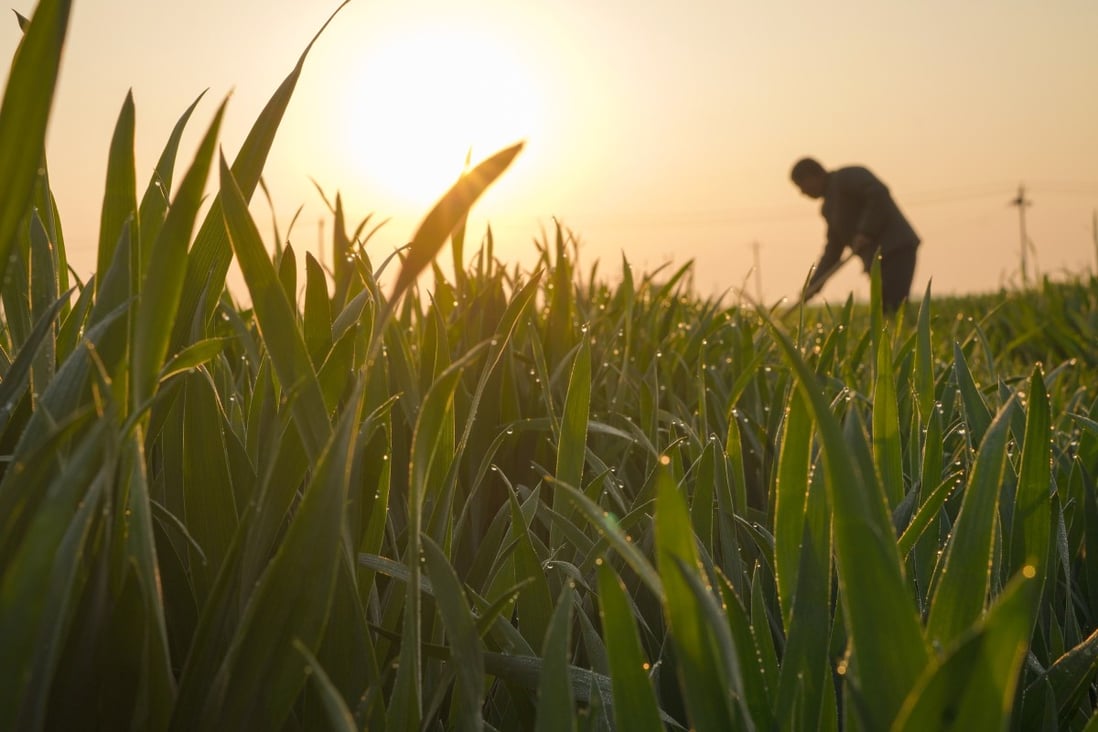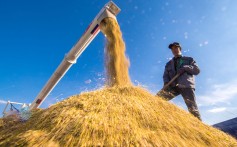Page added on April 24, 2022
How China’s food security challenges shape its decisions at home and abroad

I still recall my astonishment, as part of research inside the Asia-Pacific Economic Cooperation grouping, after discovering that China leads the world in fruit and vegetable production but loses up to half of what it produces through wastage between the farm and the kitchen table.
That equates to about a quarter of all the fruit and vegetables produced globally every year being lost, without anyone outside China realising it. It means that if China was able to cut food losses along its domestic supply chain, food security would be significantly boosted domestically and worldwide.
Why is this relevant to the global food security crisis triggered by Russia’s catastrophic invasion of Ukraine?
There are two reasons above all. First, even though the world relies heavily on exported wheat, maize and sunflower oil from around the Black Sea, it is China that determines the stability of global supply as both a producer and consumer. Second, disruptive as Russia’s aggression has been to global food markets, it would be as nothing compared to the massive food supply dislocation if China were the aggressor.
According to the UN’s Food and Agriculture Organization, China produces a quarter of the world’s grain and feeds a fifth of the world population with less than 10 per cent of the world’s arable land. It is the world’s leading producer of cereals, cotton, meat, poultry, eggs, fishery products, sugar and edible oils.
India, Indonesia, Bangladesh and Vietnam make up four of the world’s top five rice producers, but China is by far the world’s top producer with 211.4 million tonnes in 2019. We don’t notice its dominance because most of what China grows is consumed at home.
If there was a sudden blip in either production or consumption of rice inside China, though, the impact on the global markets would be immediate and massive. This is true for more food products than people imagine.
China is the world’s biggest importer of soybeans, but it is also the world’s fourth-largest producer. The 100.3 million tonnes it imported in 2021 – mainly from the US, Brazil and Argentina – accounted for 80 per cent of its needs. China’s leaders want to raise domestic production by 40 per cent by 2025, from 16.4 million tonnes in 2021 to 23 million, but this will barely dent its import needs.

I was reminded of China’s importance in global food markets by an article in the Post about a Thai-Russian venture to raise sturgeon and produce about 2 tonnes of caviar a year. Sturgeon in the Caspian Sea made Russia famous as the top source of the world’s caviar, but who holds the top spot today? China, which accounts for a third of global caviar supplies and shipped 140 tonnes in 2019.
If there is any country that has nightmares about food security, it is China. As Genevieve Donnellon-May of the National University of Singapore wrote in The Diplomat, the obsession with food security has been consistent from Mao Zedong through to President Xi Jinping today.
“Chinese people should hold their rice bowls firmly in their own hands, with grains mainly produced by themselves,” Xi said in a CCTV interview after a Politburo Standing Committee meeting in October.
The State Council’s “No 1 document” on agriculture and rural policy is usually the first one released by the central government each year, and food security is one of the Communist Party’s “six guarantees” to the Chinese people. In Mandarin, “food security” – liangshi anquan – means grain security.
This is why the priority for decades has been to boost domestic grain production. From 430 million tonnes in 2003, the target under the 14th five-year plan is to produce between 650 million and 700 million tonnes by 2025.
These efforts have been rewarded. In the Global Food Security Index, published annually by The Economist, China has risen to 34th in a ranking of 113 countries. That is alongside South Korea and beaten in Asia only by Singapore and Japan.
But with climate change constantly threatening to wreck harvests and available farmland shrinking by 6 per cent in the decade to 2019 as China rapidly urbanises, the challenge of maintaining food security remains constantly at the forefront.
The World Bank’s Food Security Update, released this month, reported its Agricultural Commodity Price Index was up 29 per cent from January, with maize prices up 48 per cent and wheat prices up 60 per cent.
With food supplies down, energy and fertiliser prices up and widespread trade and supply chain disruption, the World Bank warned: “The outlook for food and nutrition security in many low and middle-income countries is of significant concern.”
An estimated 720 million to 811 million people worldwide have gone hungry since the onset of the pandemic. The number of those in chronic hunger was up by around 100 million.
So, as the pandemic and Russia’s invasion of Ukraine have brought global food insecurity to fever pitch and raised farm prices worldwide, China might feel gratified to be well-prepared and will undoubtedly double down on the determination to get as close to sustainable food security as possible.
For those who imagine Beijing to be bent on fomenting further global conflict, in particular to recover Taiwan by force or exert muscular control over the South China Sea, this chronic food insecurity is a valuable reminder of how profoundly Beijing needs as much international economic cooperation and as little aggressive conflict as possible.
Its defensive reflexes are likely to stay that way for years to come. China’s food security is too hard-earned to be frittered away on testosterone-driven adventurism abroad.
One Comment on "How China’s food security challenges shape its decisions at home and abroad"


Fat bastard in the front bar of The Slaughtered Lamb Inn on Tue, 3rd May 2022 9:18 am
My farts have lumps in them!